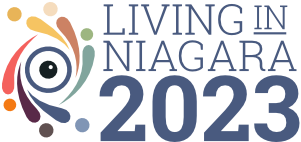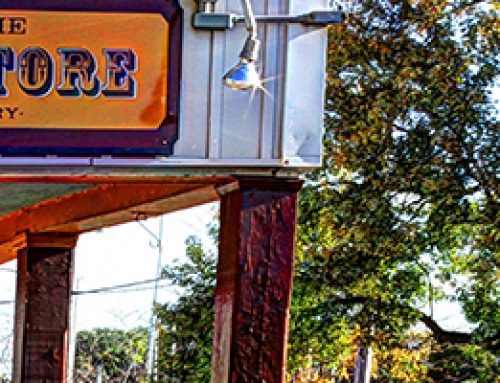Economic Impact Assessment Contribution of Arts, Culture and Heritage to the Economy in Niagara
An assessment of the economic impact of the Niagara Culture sector conducted in fulfillment of strategic Action 1.1 of the Niagara Culture Plan is considered a key step in valuing and strengthening Niagara’s creative economy. The assessment identified that Niagara’s cultural sector contributes to the regional economy in the following ways:
- In Employment 13,088 jobs (FTE – full time equivalents)
- In Labour Income $396.3 million
- In Gross Regional Product (GRP) $595.2 million
The above employment number represents 0.19% of Ontario’s total employed labour force in 2012. Alternately, this employment number represents 6.4% of Niagara’s total employed labour force in 2012.
Source: Niagara Region, Economic Impact Assessment of the Cultural Sector in Niagara, 2013
Retrieved From: https://stcatharines.civicweb.net/Documents/DocumentDisplay.aspx?Id=11371
Note: the above information is also presented in the Economic Development, Poverty and Prosperity Sector of the Living in Niagara-2014 report.
Consideration of Culture in Economic Strategies and Local Development Plans
The presence of integration of planning and economic impact assessment for arts and culture within municipal government planning is one way to measure this Indicator. Several examples of focused planning and economic impact assessment exist in the work of municipal government bodies in Niagara.
The Province of Ontario describes cultural planning as “a place-based approach to planning and development. It is a process for identifying and leveraging a community’s cultural resources, strengthening the management of those resources, and integrating those resources across all facets of local planning and decision making”. The 2011 Creative Capital Gains Plan from the City of Toronto estimated that $17.75 is generated for every dollar invested into cultural initiatives.
The Niagara Culture Plan, 2010, Creative Niagara: Economy, People, Places Identity, can be retrieved here.
This plan identifies an economic impact assessment (EIA) of the culture sector in Niagara as a key action in valuing and strengthening Niagara’s creative economy. The EIA was undertaken with the support of the Niagara Region Culture Committee and approval from Niagara Region Council in September 2011 (ICP 77-2011).
The objectives of the project were fourfold:
- assess the impact of the cultural sector on Niagara’s economy;
- measure and promote the economic vitality of culture;
- encourage the growth of culture to support both the sector and broader economic prosperity in Niagara; and
- develop a user-friendly framework for updating and tracking economic data, and assist cultural groups to develop and refine their own indicators and metrics.
To accomplish these aims, the project employed three central components:
- Community Engagement- including information sessions; a comprehensive Niagara sector survey; an open house; and a metrics and indicators workshop
- Information Collection — including existing data sources such as government economic and demographic data (e.g., StatsCan NAICS codes); original online Niagara culture sector survey results; and case studies
- Analysis — including Niagara culture industry profile; direct (employment and revenue flow in the culture sector) , indirect (economic activity associated with other sectors supplying goods and services to the culture sector) and induced (economic activity attributable to respending of labour income) impacts of culture; Niagara’s culture sector in context; strengths and challenges assessments; and opportunities and recommendations
Source: Niagara Region
Retrieved From: https://www.niagararegion.ca/government/council/agendas-minutes/2010/pdf/ICPC09152010min.pdf and https://notl.civicweb.net/document/4256/Aug%208%202013%20-%20Other%20Mun.pdf?handle=B733BF00DA0341C285745644C7F21358
Niagara Region Welland Canal National Historic Site Application
In October, 2013, Niagara Region Council passed a motion to submit a Welland Canal National Historic Site Application. The research leading up to the submission of this application cites the significance of the canal in influencing the growth pattern of Niagara municipalities and Canada over the canal’s almost 200 year history. The goal is to have lands through which the first 3 Welland Canals ran designated historic, with a vision of creating a Canadian heritage tourism draw and spurring redevelopment of original canal communities.
Source: Niagara Region
Retrieved From: https://notl.civicweb.net/document/4521/Nov%2021%202013%20Other%20Mun.pdf?handle=71C551172EC34494B52AD1948CFF7E87
Niagara Investment in Culture
The Niagara Investment in Culture program, launched in August, 2014 by Niagara Region, aims to celebrate Niagara’s history and identity, promote the culture sector and increase access to quality cultural experiences for residents and visitors throughout the region by providing financial incentives.
There are two streams of eligibility for the program: local municipalities and non-profit cultural organizations in Niagara. Applications for projects from across the cultural spectrum – arts, heritage, festivals and more – are encouraged. Projects should be creative, collaborative, inclusive and Niagara-based, with special consideration for those involving a range of partners, participants and funding sources.
Source: Niagara Region
Retrieved From: https://www.niagararegion.ca/news/aug262014.aspx
Inspire St. Catharines Culture Plan 2020
The Draft Inspire St. Catharines Culture Plan 2020 was released for review in the fall of 2014; it will be presented to City Council in early 2015. The plan contains 7 strategic priorities, 28 key initiatives, an implementation plan and a review of the cultural landscape in St. Catharines.
A mapping of cultural assets in the city revealed more than 1,000 identified cultural resources, and many more not formally identified in this process. Detailed maps of where culture lives in St. Catharines as well as cultural participation habits of residents are covered.
‘City Priorities’ is a related 16-page document that links the Culture Plan to existing city plans and priorities and examines community cultural delivery.
‘Cultural Investment’ is a 9-page document that analyzes and compares St. Catharines’ current investment in culture to similar sized municipalities and examines the impact of the St. Catharines Cultural Investment Program (SCCIP).
Source: City of St. Catharines
Retrieved From: http://www.stcatharines.ca/en/governin/resources/CulturePlan_2014-09-15_FINAL_PRINT.pdf
http://www.stcatharines.ca/en/governin/resources/CulturePlan_Sect5_CulturalInvestment.pdf
City of Welland Parks, Recreation and Culture Plan
This plan was published in 2006 by the City of Welland Parks and Recreation Department. It consists of two documents: Parks, Recreation And Culture Plan: Final Report; and Parks, Recreation And Culture Plan : Summary Report. Vision 2025
Source: City of Welland
Retrieved From: http://www.niagaraknowledgeexchange.com/resources-publications/parks-recreation-culture-plan-welland/
Town of Pelham Cultural Master Plan
The Town of Pelham Cultural Master Plan is a strategic planning document that provides a framework of action to direct, sustain and leverage cultural investment in Pelham. The document provides a useful synergy of cross-sector and focused strategic directions and actions; much of which represents short-term priorities (1-3 years) for the development of the cultural sector. The Town of Pelham’s 2011 Strategic Master Plan sets forth strategic directions to ensure municipal planning objectives, protocols and services cater to the integration of the Culture Plan.
The Culture Plan serves to harness, broaden and in some instances reshape the municipal planning focus to ensure the optimal development of the cultural sector; which in the context of Pelham can have signficant effects on economic prosperity, community vibrancy and enhancement of the municipality’s regional profile.
This municipal planning document feeds into the municipality’s planning processes for tourism, recreation and economic development and will help to enable:
- Planning for cultural facilities;
- Increase in tourism activity;
- Business retention and attraction;
- Downtown and neighbourhood revitalization; and
- Cultural and heritage preservation.
Source: Town of Pelham
Retrieved From: http://www.pelham.ca/cultural-master-plan
Niagara Falls Culture Plan
Work began in the fall of 2013 to develop a Culture Plan for the City of Niagara Falls. The purpose of the plan is to develop a road map for the City to guide its future investment in facilities, programs and activities in support of the arts, culture and heritage sector in the city. The study process involved a number of data collection activities including interviews with various representatives of arts, culture and heritage organizations; interviews with selected municipal staff and members of Council; a survey of cultural organizations in the city; a widely promoted community survey (to which more than 300 individuals responded, resulting in a very representative and useful data base of information); focus group sessions with key arts and heritage sectors; two open houses; a benchmarking assessment of other communities that were successfully investing in their cultural sectors; and two presentations to City of Niagara Falls Council.
An Executive Summary document reports on the recommendations resulting from this work, and various aspects of the implementation of the plan, to be phased in over a 5-year period. In total, 24 recommendations were made, based upon a synthesis of the major data themes and findings from the study process.
Source: City of Niagara Falls
Retrieved From: http://www.niagarafalls.ca/pdf/news/culture-plan-executive-summary.pdf
Niagara on the Lake Official Plan Review Heritage, Arts and Culture, 2014
The Official Plan of the Town of Niagara on the Lake was adopted in 1994. A 2014 document summarizing Heritage, Arts and Culture aspects of updating the Official Plan speaks to new approaches to heritage planning in Ontario and the linkages with sustainability, active transportation, tourism, neighbourhood revitalization and economic viability.
The document suggests some key questions that Culture in the Official Plan should address:
- How can cultural resources contribute to retaining youth and young families?
- How does youth engage with culture?
- What cultural activities do youth participate in?
- How can culture be used as a tool to combat the social isolation of seniors?
- How do seniors engage with culture?
- What cultural activities do seniors participate in?
- How can the Town support the development of creative industries?
- How can Public Art and place-making be incorporated in the Official Plan?
Source: Town of Niagara-on-the-Lake
Retrieved From: https://notl.civicweb.net/document/5053/Official%20Plan%20Review%20-%20Heritage,%20Arts,%20and%20Culture%20Issues%20Report.May%202014.pdf?handle=164E814290B24D3BB0E1BB39B1A762AD
Town of Grimsby Official Plan 2012
The 2012 Official Plan for the Town of Grimsby includes a 5-page section related to Cultural Heritage and Archaeology. The Goal is to protect cultural heritage resources which are important to the identity and character of the Town.
Source: Town of Grimsby
Retrieved From: http://www.grimsby.ca/Planning/Official-Plan







